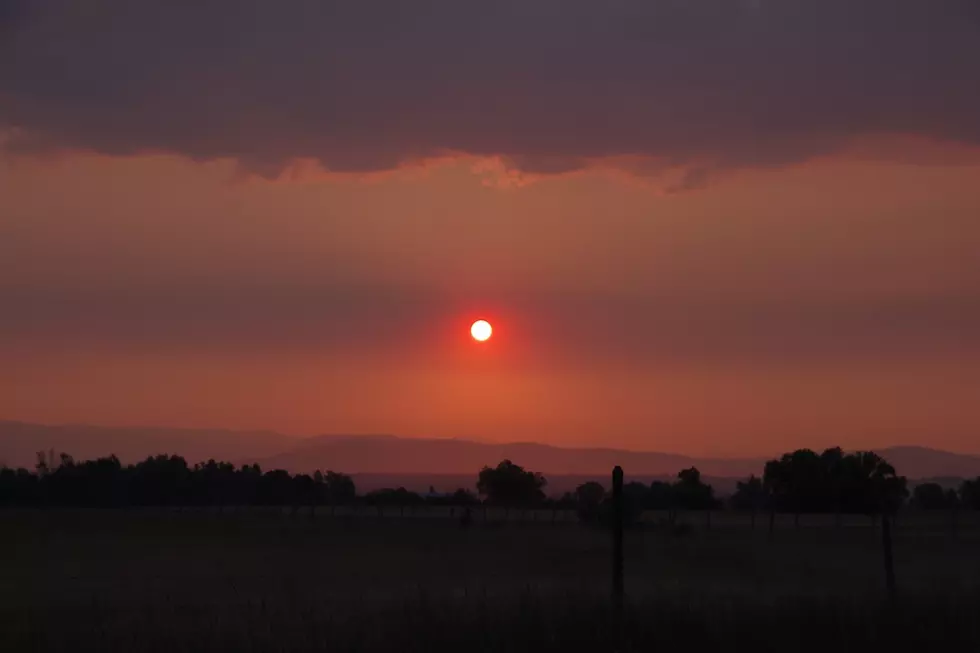
After hottest July on record, forecasters predict hot dry fall for the US West
(CN) — Coming off a July recorded as Earth’s hottest month on record, climatologists predict average temperatures will continue to rise, drying out vegetation and fueling the kind of rapid growth in wildfires already seen in western states this summer.
“All science points to this becoming a more likely scenario in future summers,” said Dan McEvoy, regional climatologist for the Western Regional Climate Center. “Temperatures are expected to continue to warm.”
McEvoy made the prediction during a monthly climate briefing sponsored by the National Oceanic and Atmospheric Administration.
As climatologists discussed the record-shattering heat experienced across the globe last month, 104 wildfires blazed across 2.5 million acres in the United States, nearly all of them in western states. While the number of wildfires this summer has been fairly typical for western states, the rate at which those fires spread has been exceptional.
“We are seeing pretty remarkable growth in the fires like the Dixie Fire,” McEvoy said. “The drought being exacerbated by extreme heat that has left bone dry loads and these fires are exploding.”
The Dixie Fire, which grew by an astonishing 100,000 acres in just 24 hours earlier this month, has now torched over 678,000 acres of land — making it the second-largest wildfire in recorded California history.
Even if drought conditions improve in the coming years, McEvoy predicted rising temperatures will continue to dry out vegetation and the West will continue to burn.
“We’ll have some wet years in the mix, but with temperatures continuing to increase, the fuels will continue to rapidly dry out and become more flammable and be able to burn quicker and spread faster so we do expect more of this in the future over a warming climate,” McEvoy said.
July was not the only sizzling month recorded across the globe this year. Average global land and ocean temperatures for the entire six-month period of January to July this year were documented as the hottest on record, tying with 2018.
Nine of the 10 warmest temperatures for July were recorded over the last 10 years and each of the last seven years documented the hottest July on record, according to Karin Gleason, a climatologist with NOAA.
“It appears that it’s virtually certain 2021 will rank as one of the 10 warmest years on record,” Gleason said.
Precipitation in the contiguous United States was 0.58 inches above average last month thanks to above average rainfall in the Northeast, southeast, Great Lakes, Midwest, South and portions of the Southwest. New York and Massachusetts had record precipitation in July due in part to Tropical Storm Elsa, which soaked both states with massive amounts of rainfall.
Despite above-average precipitation in the Northeast, 47% of mainland states remain stuck in drought with drier-than-average conditions recorded in the Northwest, Northern Tier, Midwest, Appalachians and portions of the central Plains.
Drought severity slightly diminished in parts of the Southwest last month due to a particularly intense monsoon season, but dry conditions are expected to persist in most of the western United States over the next several months. Lower than average precipitation and higher than average temperatures are predicted for much of the West from September through November, according to Matt Rosencrans, a meteorologist with the NOAA Climate Prediction Center.
A lack of rainfall over the last two water years has left California reservoirs well below average. Water in Lake Oroville north of Sacramento is at a record low 34% of average, which has led to a shutdown of the hydroelectric power plant there.
Earlier this week, the federal government cut water allocations for Arizona, Nevada and Mexico, citing record low water levels in the Colorado River. Lake Mead, the nation’s largest reservoir, declared its first ever water shortage.
“Water supply in the Colorado River basin has been declining the last 20 years,” McEvoy said. “This shortage will mostly impact Arizona and Nevada in 2022.”
Rosencrans forecasts a 70% chance that La Niña conditions will return this winter for a second year in the row, which could bring drier-than-average conditions to the Southwest but more precipitation for coastal regions of the Northwest.
“For Oregon and Washington coastal areas, some improvement is expected in precipitation,” Rosencrans said.
